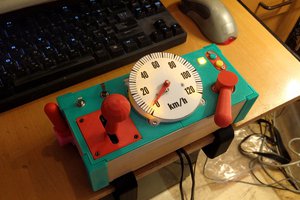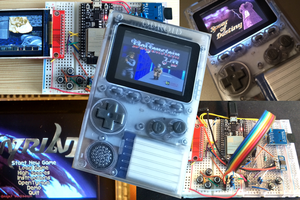Ocelot games are firmware images for the dsPIC33, written in C. There's two games for the Ocelot: Star Lynx, a 3D third-person flight-into-the-screen space shooter with talking animals and a huge floating-head final boss; and Mattsteroids, a classic blow-up-the-rocks arcade game!
Both are written by me and written atop an abstraction layer that combines the physical interfaces with some useful services like graphics and sound to produce a complete arcade system.
As a side note, the architecture only allows running code from internal flash - this is why it's more of a tabletop arcade similar to Grandstand Astro Wars than a home console like a Mega Drive. It'd be possible to give the Ocelot a bootstrapper that reads in cartridges (ROMs with an edge connector) and spontaneously flashes itself with the game it finds (or does a little checksum dance to see if it already has the current game 'installed' and skips that if not). The PIC is only rated for a finite amount of flashes, but if you needed a consoleish Ocelot, that's how it'd work.
 Matt Carr
Matt Carr

 svofski
svofski
 Sven Dahlstrand
Sven Dahlstrand

 Jason
Jason
Can you instruct me on how to build this? Schematics, components list, this sort of thing?